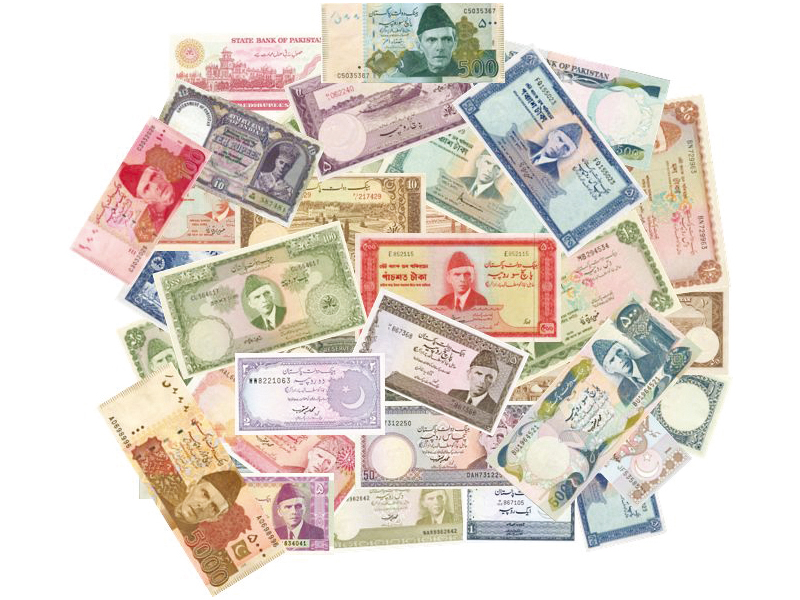
The number of banknotes in circulation has increased 16% during the last five months, according to data released by the State Bank of Pakistan (SBP) yesterday.
The number of notes in circulation amounted to Rs2.2 trillion on November 29 in comparison to Rs1.9 trillion on June 30, amounting to an increase of Rs310.4 billion between July and November, data revealed.
The number of notes held by the SBP Banking Department on November 29 amounted to Rs111.2 million, which brings the total number of notes issued to Rs2,248.8 billion.

Analysts attribute the increase in the currency notes in circulation to excessive borrowing by the federal government for budgetary support.
For instance, net borrowings by the federal and provincial governments for budgetary support between July 1 and November 22 remained Rs842.1 billion. The amount appears phenomenally high considering the fact that these governments retired Rs77.5 billion in the corresponding 145-day period in the preceding fiscal year.
Excessive note-printing is also resulting in a sharp spike in inflation. The Consumer Price Index (CPI) – a key indicator of inflation in an economy – stood at 10.9% in November, its highest level in the last one and a half years.
According to Topline Securities, double-digit inflation is expected in December. “For fiscal year 2014, we expect the CPI to be 10%-10.5%,” analyst Zeeshan Afzal wrote in a recent research note on inflation trends in the economy.

A majority of economists believe that the discount rate – which is the interest rate at which commercial banks borrow from the central bank – should always stay higher than the inflation rate. Hence, the rising inflation is likely to push interest rates in the economy upwards, resulting in low investment and sluggish growth in the economy.
“We believe that reducing the gap between the discount rate and inflation will warrant another increase of 50 basis points in the next monetary policy statement,” Afzal said, predicting an uptick in interest rates.
Speaking to The Express Tribune, an economist working for a commercial bank said the SBP has failed to resist the government’s insatiable appetite for borrowed money for budgetary support, which is paving way for a higher-than-expected budget deficit.
Although the deficit for fiscal year 2014 is budgeted to be 6.3%, many economists believe it is going to be higher than that due to continuous government borrowing from the central bank.
Domestic debt of the central government stood at Rs9.8 trillion at the end of October. It was Rs9.5 trillion at the end of the last fiscal year, which translates into a rise of 3.8%, or Rs370 billion, in just four months.
Published in The Express Tribune, December 7th, 2013.
Like Business on Facebook, follow @TribuneBiz on Twitter to stay informed and join in the conversation.
COMMENTS (3)
Comments are moderated and generally will be posted if they are on-topic and not abusive.
For more information, please see our Comments FAQ



1734780406-0/Untitled-(11)1734780406-0-165x106.webp)
1734778885-0/Untitled-(10)1734778885-0-165x106.webp)










1734587529-0/Express-Tribune-(1)1734587529-0-270x192.webp)
1734606611-0/Express-Tribune-(8)1734606611-0-270x192.webp)






This mechanism will drastically impact economy.Its very easy to print note and regulate country operations. Its not time of 98's when every thing was smooth and dwindling growth.The GOP should keep in mind it's 2013 when inflation in double digit, Population 180 million and corruption on top. The GOP should utilize NAB services with good intention to eradicate corruption of Beauracrates, Politicians and Generals. Then there will no need to print extra notes which hikes inflation. Good intention leads to good results.